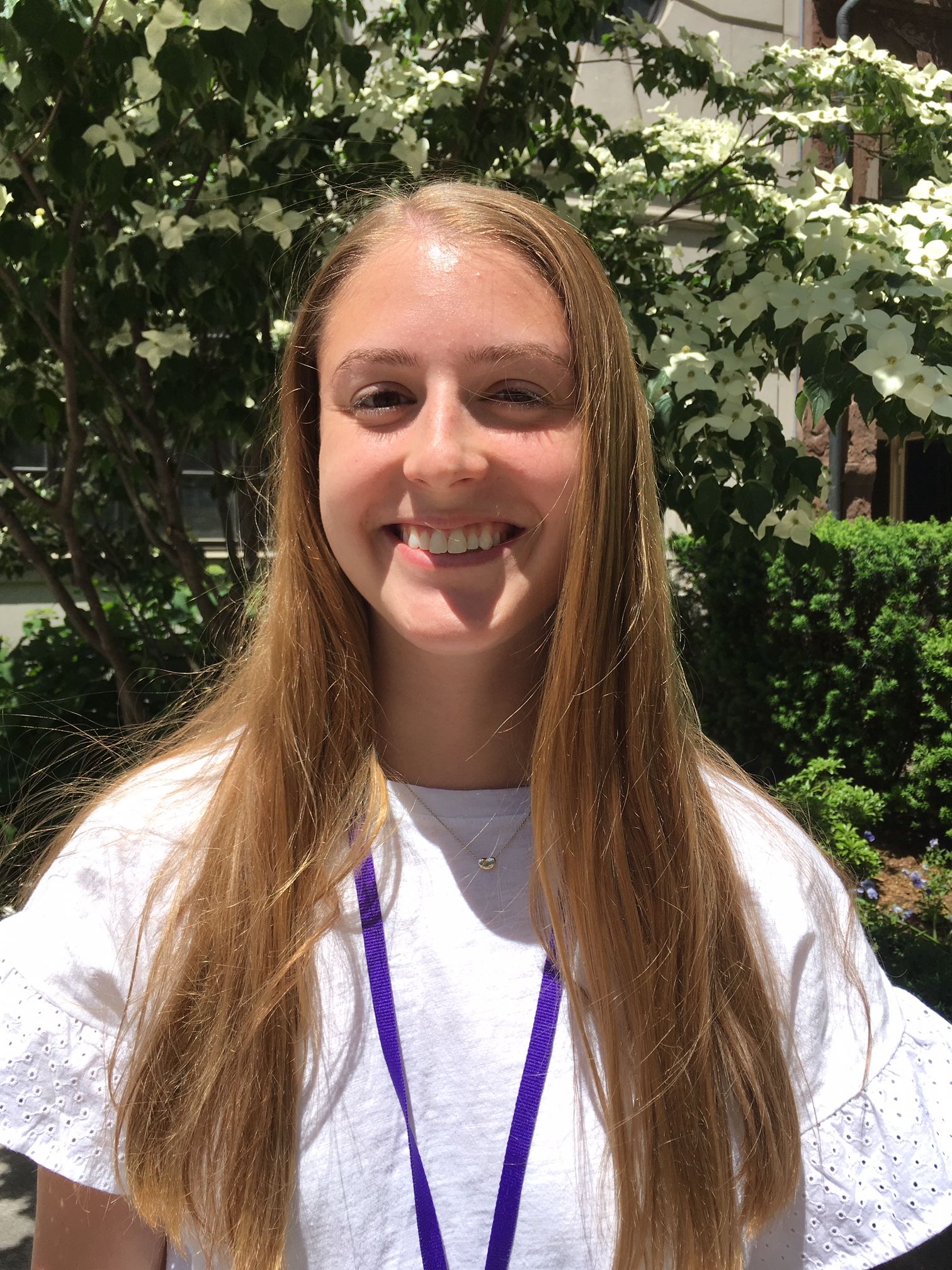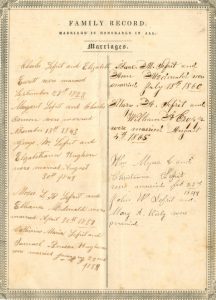This past week I began to explore the large collection of Bible records on the American Ancestors Digital Collections website, and I was expecting to find just ordinary records, not anything surprising. What I uncovered, however, is just how helpful these records and registers can be in understanding your family history. While the records typically convey very simple information to the reader, such as births, deaths, and marriages, they sometimes contain other information that can result in a “light-bulb” moment when you are piecing together your genealogy. NEHGS has digitized a series of Bible records and family registers, and continues to add new records regularly, creating a selection of nearly 300 so far in the Digital Collections.
Although none of the families on the collection site include my own, I found what is perhaps even more valuable as the records include what people from these time periods experienced, as well as new parts of history I had never been exposed to before. While many of the Bible records and family registers consist solely of the lists of births, deaths, and marriages that occurred throughout the years in one specific family, many also include interesting tidbits about who these people were – information that has been inserted into one family book that is passed down for decades.
As the collection of Bible records is extensive, I chose to take a deeper look into only three of the records – the ones of families that grabbed my attention and presented the opportunity to learn something new about genealogy. The three family records I chose are all similar in that they describe the births and the deaths of family members very clearly, include marriage announcements, and consist of at least one obituary. However, I chose to focus not on what makes them similar, but instead on what makes them different, with the hopes of inspiring others to look into these records and find hundreds of other hidden treasures.
The biography breathes life into the name William Ellery Copeland and it made reading these particular records a much more humanizing experience...
I started first with the Copeland and Townsend family records, which include a descriptive and admiring biography of William Ellery Copeland after his death in 1904.[1] The typescript biographical note was written by Joseph Shippen and it describes Copeland’s life from Harvard graduation to enlisting in Union forces during the Civil War, pursuing a scholarly career in the ministry, and then spending his final years with family. The biography breathes life into the name William Ellery Copeland and it made reading these particular records a much more humanizing experience, as it allowed for the people listed on the page to become more real.
One of the most engaging pieces of information that I found while combing through the Bible collection was from the Charles Sefrit family records.[2] These records include account forms from Miss L. Cropp recognizing dues for the Independent Order of Good Templars (IOGT).[3] I had not heard of this organization before, so I did some quick research to discover what it meant for Miss Cropp to be a part of it. I learned that the Independent Order of Good Templars was a fraternal organization founded in 1851 in Utica, New York, that at first supported the temperance movement and now – under the name International Organisation of Good Templars – has become a source of help for anyone struggling with alcoholism. The IOGT was ahead of its time in that it believed in the rights of all people, encouraging women, like Miss Cropp, to join and let their voices be heard. Once again, this obscure fragment from a randomly-chosen Bible record allowed me to see this person as she once was when alive.
The IOGT was ahead of its time in that it believed in the rights of all people, encouraging women, like Miss Cropp, to join and let their voices be heard.
Last and certainly not least, the William Fellowes family records gave me insight into how much weight these records carried at the time, and what the family valued, as it includes a Bible provenance.[4] Bible provenances are instructions on how the Bible should be passed down through the family. The note is short and yet it illuminates the importance of the book. It reads, “Dear Fellowes, Here is the old family Bible – It belonged to your grandfather as you can see on the fly leaf… It seems to me that the proper place, for such a sacred book is in your beautiful home.” The author of the note is a person named Etta (no surname or family relationship provided), who also writes that the “honored head of the family” is to receive the book and continue the tradition of passing it on.
I began this search in the Bible Records collection unsure of how much I would find and ignorant of what information can be collected with a little bit of hard work. I now have a better understanding of genealogy and I would highly encourage you to take a look at this collection with an open mind, whether it is for research or simply because you would like to meet an interesting person who lived a long time ago.
*
Please note: the Family Registers and Bible Records collection is available to NEHGS Research and Contributing Members.
Notes
[1] Bible record for the Copeland and Townsend families, Mss A 6309, R. Stanton Avery Special Collections, New England Historic Genealogical Society, online at DigitalCollections.AmericanAncestors.org.
[2] Bible record for the Charles Sefrit family, Mss A 887, R. Stanton Avery Special Collections, New England Historic Genealogical Society, online at DigitalCollections.AmericanAncestors.org.
[3] "The History." IOGT International. Accessed 10 June 2019.
[4] Bible record for the William Fellowes family, Mss A 7324, R. Stanton Avery Special Collections, New England Historic Genealogical Society, online at DigitalCollections.AmericanAncestors.org.
Share this:

About Lydia Cheever
Lydia Cheever is an intern at the NEHGS Library. She is a student at Marist College, where her major is history education. Lydia plans to become a high-school history teacher. She is interested in all things historical, particularly the period of World War II.View all posts by Lydia Cheever →
